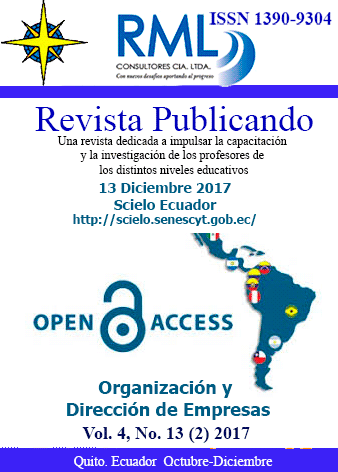Resumen
The article summarizes the theoretical and practical issues of the optimization process and risk management in the implementation of foreign economic activities at the enterprise. When writing the article, we offered a method for assessing country economic and political risks based on an analysis of sovereign ratings of the countries identified by leading international rating agencies, such as: Standard & Poor”™s, Moody”™s and Fitch, as well as the analysis of the news background in relation to a particular country for the rapid identification of possible restrictions in the sphere of bilateral trade. As a result, we developed three main strategies to minimize such risks. After that, we offered a method to minimize possible marketing risks by interviewing key clients of the company and identifying the main risks. To minimize customs risks, we offered a method for the step-by-step determination of the customs value and aggregate customs payment on the basis of current regulatory and legal documents. The next stage was the assessment of possible currency risks, we offered a technique based on historical volatility of the value of currencies, gave a corresponding formula, proposed the main instruments for minimizing currency risks, such as a forward foreign exchange contract, currency option and their derivatives.
Referencias
Aswath D.,2003. «Country Risk and Company Exposure: Theory and Practice », Journal of Applied Finance, vol. 13, â„– 2.
Burnaby P., Hass S.,2009. «Ten steps to enterprise-wide risk management », Corporate Governance: The international journal of business in society, vol. 9, â„–. 5, pp. 539-550.
Danov A.A., 2008. "Risk Classification", Bulletin of Tambov University. Series: The Humanities, No. 10 (66), p. 350-354.
Guerron-Quintana P., 2012. «Risk and uncertainty », Business Review, â„–. Q1, pp. 9-18.
Hocman F., 2014. «Probability of unproclaimed default and its ingerention in sovereign country risk », International Multidisciplinary Scientific Conference on Social Sciences and Arts SGEM2014, www.sgemsocial.org, SGEM2014 Conference Proceedings, book 2, vol. 2, pp. 593-600.
Hommel U. 2003. «Financial versus operative hedging of currency risk », Global Finance Journal, vol. 14, â„–. 1, pp. 1-18.
Jeon J.-J., Kim S. and Lee Y., 2017. «Portfolio credit risk model with extreme dependence of defaults and random recovery », Journal of Credit Risk, vol. 13, â„– 2, pp. 1–31.
Krasovsky N.V., 2012. "Classification of Hedging Tools for Currency Risks", Bulletin of the Saratov State Social and Economic University, No. 1, p. 5-9.
Melnikova E.I., Shirshikova L.A.,2011. "Risk Classification of Economic Activity of an Industrial Enterprise from the Position of Hedging", Bulletin of Ural State University of Economics, No. 4 (36), p. 55-61.
Pavlushina A.A.2014. "Form and Content of International Commercial Contracts", Issues of Economics and Law, No. 6, p. 26-29.
Usted es libre de:
Compartir — copiar y redistribuir el material en cualquier medio o formato
Adaptar — remezclar, transformar y construir a partir del material
La licenciante no puede revocar estas libertades en tanto usted siga los términos de la licencia
Bajo los siguientes términos:
Atribución — Usted debe dar crédito de manera adecuada, brindar un enlace a la licencia, e indicar si se han realizado cambios. Puede hacerlo en cualquier forma razonable, pero no de forma tal que sugiera que usted o su uso tienen el apoyo de la licenciante.
NoComercial — Usted no puede hacer uso del material con propósitos comerciales.
CompartirIgual — Si remezcla, transforma o crea a partir del material, debe distribuir su contribución bajo la lamisma licencia del original.
